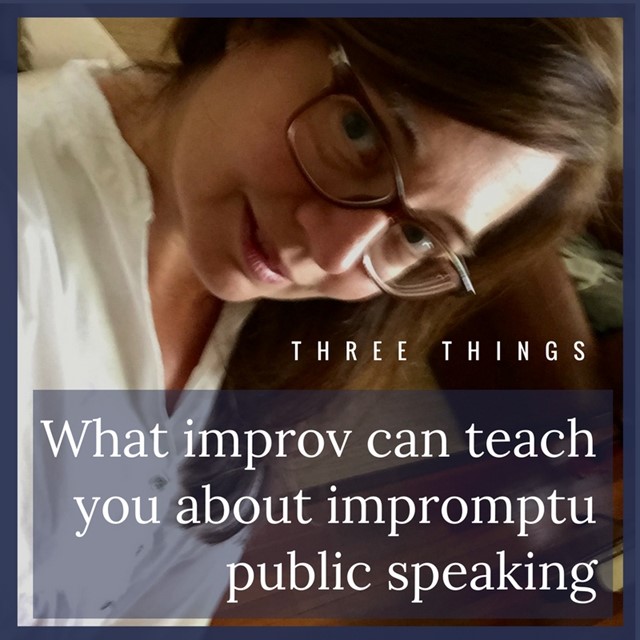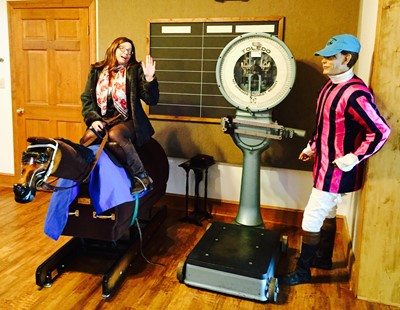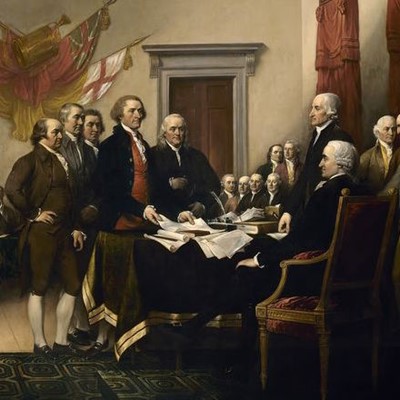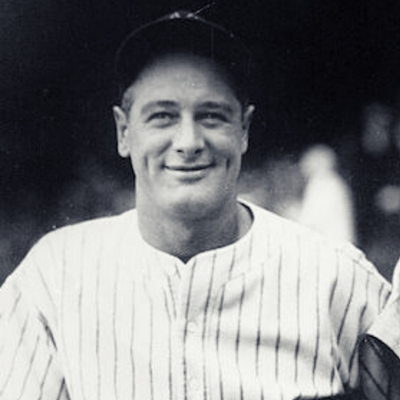
Ah, to be that person who can speak eloquently with no warning, who can field questions and provide answers without a care in the world.
While we do meet presenters who prefer to wing it—and are gifted with the ability to speak off the cuff—most people we work with either fear impromptu speaking or aren’t as good at improvising as they’d like to be.
Can improv acting help? Our faculty member Jenny Maxwell has been taking improv classes over the last five years. Here are three ways she applies what she’s learned to public speaking.
1. Stop looking for the perfect words.
“In every class I’ve taken, there’s someone who freezes up when we’re playing improv games because they want to be clever. They treat every exercise like an audition for Second City or Whose Line is it Anyway.” Jenny says. “I’ve been guilty of that, too. And it occurs to me that speakers have the same problem. They get in trouble when they try to do too much in an off-the-cuff situation."
To apply this to speaking, she suggests you might start an impromptu talk with a simple statement about what you know to be true or the status of the project. “At The Buckley School, we emphasize that speakers should use a strong open, but strong doesn’t have to mean wildly clever and creative. A good open does two things: tells me what it’s about and why I care. When I’m speaking off-the-cuff, meeting those two requirements in the simplest way possible helps me get started,” says Jenny.
 A couple of prompts for an improv game that Jenny found in her pocket after a class.
A couple of prompts for an improv game that Jenny found in her pocket after a class.
2. Move your body to loosen your mind.
“In one ridiculous exercise we were doing, I was supposed to be on a horse. I had no idea what to say to get the scene started, and I was on the brink of freezing up. But I remembered this tip from an earlier class. So while I was thinking, I started riding my imaginary horse. And then the perfect first line came to me,” Jenny says.
She says a gesture, body language, a walk across the front of the room can work the same way in a presentation. “You’re not just standing there, dumbstruck. You’re doing something. I find that movement helps me relax and think in those situations, because it feels like my momentary lack of words isn’t so obvious.”
 "This was way more horse than I had to work with in my class." Jenny checking out the training horse at the National Steeplechase Museum.
"This was way more horse than I had to work with in my class." Jenny checking out the training horse at the National Steeplechase Museum.
3. Keep it positive and shift your focus onto supporting others.
Actors like Tina Fey who have an improv background talk about the technique of “yes and..." The idea is that you not only accept what the other player gives you, but you also build on it.
“My first improv teacher started every class with the reminder to make your partners look good and feel smart,” says Jenny. “And to do that, you really have to listen and work with the story that’s developing in front of you rather than going with your preconceived ideas.”
In presentations, Jenny says she applies those lessons by trying to stay open to the people in the room and responding to what they need. “Since I’ve been doing improv training these last few years, I noticed I’m more at ease with people challenging me during a presentation. Sometimes, I ‘yes or…’ instead of ‘yes and…’ if I disagree. But I think I’m better at listening, and even changing how I present material, to address what I’m hearing.”
If you’re interested in learning more about improv, Jenny suggests theaters in your area may have classes. “I’d totally expect there to be some aspiring comedians in a class but if you’re not one, don’t let that put you off. There’s a lot to gain if you just take a class or two with no expectations beyond having fun and trying new ways of using your brain.”
And here's Tina Fey on The Actor's Studio, talking about the fundamentals of improv:






